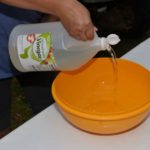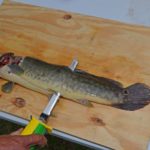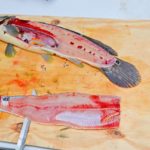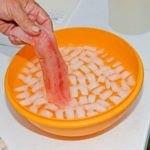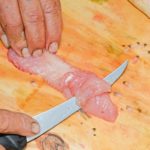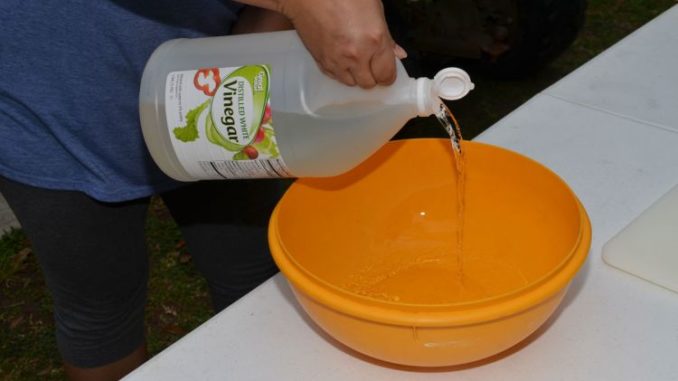
It is often said that Cajuns eat anything. This picturesque pair may be poster boys for that adage. Their Cajun accents were so thick that they could have been cut with a knife and served on a cheese tray.
Mike, at 66, is a tall, cowboy boot-wearing man with a cowboy hat perched jauntily on his head. His loves, besides choupique fishing, are trail riding with his mule-drawn buggy and wild hog hunting. His look is set off with a grizzled Fu Manchu moustache.
Dale is younger at 52, and like his uncle sports a moustache, his resembling a big silver push broom. The disabled cane field and construction worker is less active than his uncle. “I fish and I drink beer now,” he said unassumingly.
“But I love to coon hunt at night. The dog does all the work. I bring someone else to carry them. I just shoot them.”
Both men admitted to loving to eat raccoons. “I eat nutria, too,” volunteered Mike. “I pan fry that with onions. That’s why you don’t see many nutria around our place. We shoot them and eat them.”
Both have eaten choupique their whole lives. At Mike’s daughter’s home, I found out why. Amy mixed the fillets in Creole-seasoning flavored yellow mustard to coat them and then dredged them through seasoned Louisiana Fish Fry before frying them at 350º.
The results were outstanding — as good as the best crappie I have ever eaten.
Both men insisted that proper care, even during cleaning, was key. The use of vinegar counteracts the curse of choupique flesh — its tendency to have a “cottony” texture.
“Stored in cold vinegar water, they will last a day. After that, they got to go,” Mike said firmly.
He added that a “big thing” in cleaning the fish is to be sure to shave off and save the flesh from the outer side of the rib cages. “That’s the best part of the fish. It fries so crispy!”
1) Add 1 cup of vinegar to approximately 1 gallon of water and ice.
2) Using an electric knife, cut downward behind the head, then turn the knife sideways along the backbone to slice the fillet off the frame.
3) Hold the fillet in place skin-side-down with the fingers of the non-cutting hand and cut the flesh loose from the skin with the electric knife.
4) Cut the rib cage out of each fillet with a sharp fillet knife.
5) Immediately place the fillet in the vinegar-ice water.
6) With the same knife, carefully shave the flesh from the outside of each rib cage and add it to the water.
